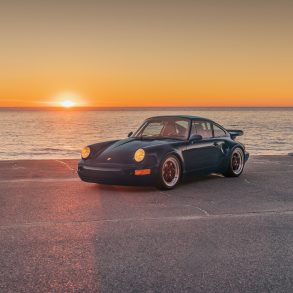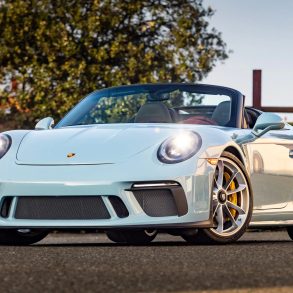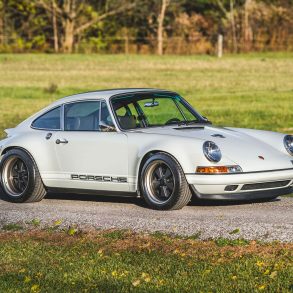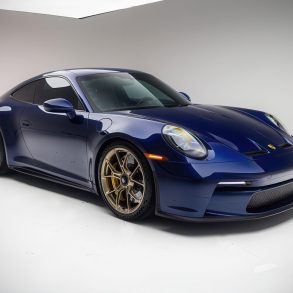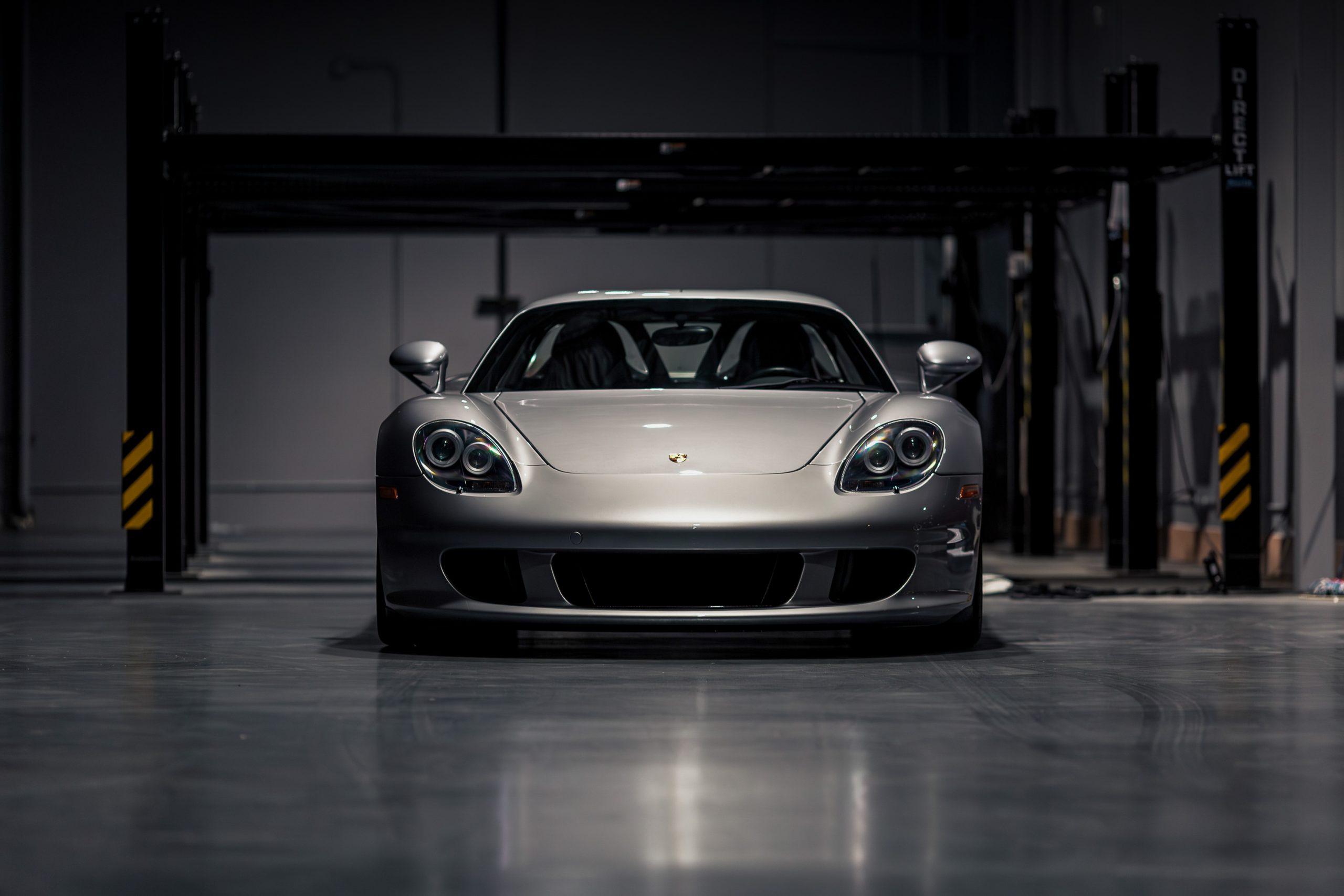(1993 – 1994) Porsche 911 Turbo 3.6 (964) – Ultimate Guide
Porsche’s era of dominance at Le Mans was over, that innovative period in motor sport during the mid-70s, which saw Porsche cars occupying half the grid at Le Mans (in 1975, of the 55 entrants 27 were Porsche with 24 of those 911s).
The winning years of the 956 and 962 race cars were also a distant memory, the 962’s last Le Mans win was in 1987 followed by a second place the following year. But the experience gained on the race track in the field of turbocharging set the company on a course that was the envy of many other much larger motor manufacturers.
Taking a step back for a moment, Porsche introduced the ‘G-Series’ 911/930 Turbo in 1975, powered by a 2994 cc flat-six engine developing 260 bhp. In 1978, the Turbo was fitted with a 3299 cc engine which the model retained right up until 1993, during which time power had crept up incrementally to 355 bhp (with performance kit) at the end of that period. Up until 1988 though, the 911 Turbo had been driven through a 4-speed ‘box, and it was only in ’89 that it received a 5-speed unit, which accounted for some of the model’s increase in top speed.
Referring to the old 911/930 Turbo model, Porsche specialist Thomas Schmitz quipped, “There is a common joke in Germany, if you drive a four-speed Turbo you don’t need a throttle pedal, you can just have a switch, because it is either ‘power on’ or ‘power off’, it is everything or nothing.”

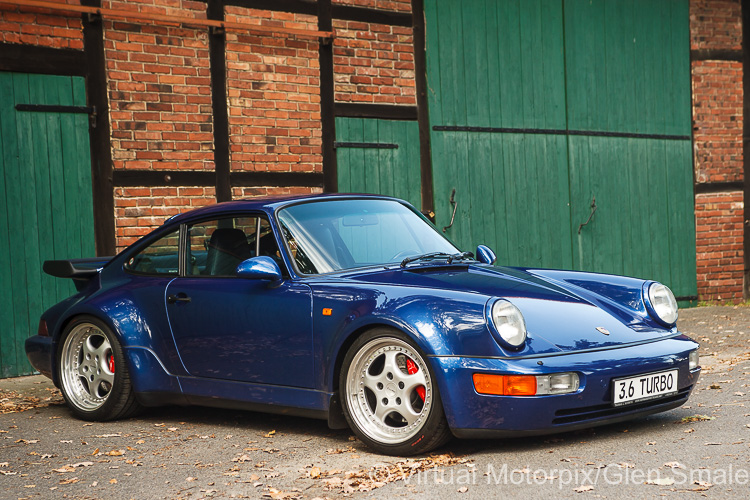
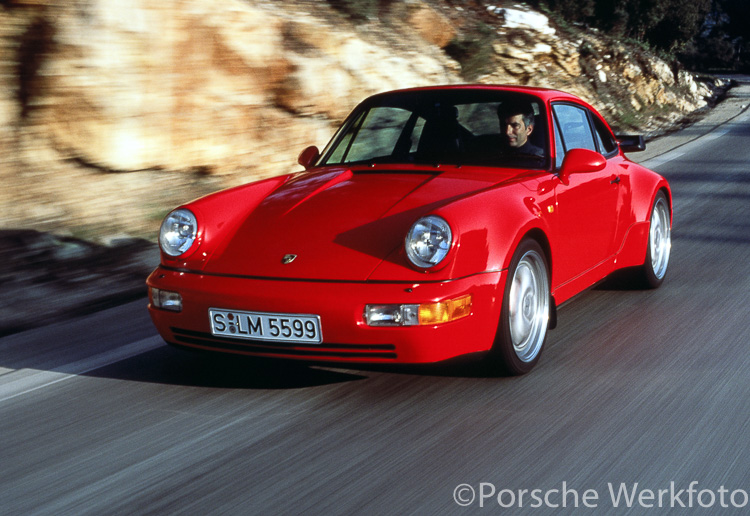
A familiar problem with turbocharged engines, was the delay in throttle response, more commonly referred to as ‘turbo lag’. By fitting a wastegate to the 3.3-litre turbo engine, a system which had until this time was more usually fitted to race cars, this turbo lag problem was significantly improved. This elaborate control system gave the turbocharger a noticeable torque increase at lower engine speeds. Also, the original 3-litre 911/930 had been produced without an intercooler, but with the introduction of the 3.3-litre car in ‘78, an intercooler was fitted which raised output significantly. These 911 Turbo models, manufactured up to and including the 5-speed 1989 version, are referred to as ‘Turbo 1’ models.
Introduction of Type 964 3.6-litre engine

The introduction of the 964 Carrera 4 in 1989 brought with it a new 3.6-litre engine, but unfortunately this engine was not yet ready for the application of a turbocharger at the 964’s launch. Due to Porsche’s production cycle, it was more than a year before the 964 Turbo arrived in February 1991, and against most expectations, it was disappointingly fitted with the old 3.3-litre engine. Although power was up on its predecessor, this was thanks to a larger turbocharger, a new injection system and revised electronic engine management. Those 964 Turbo models produced from 1991 onwards are referred to as ‘Turbo 2’ models, despite being powered by the same basic 3.3-litre engine. Notwithstanding the press department’s efforts to convince the media that the new 3.3-litre 964 Turbo was more powerful and represented a great stride forward, in reality the much heavier body negated any advantage in performance.
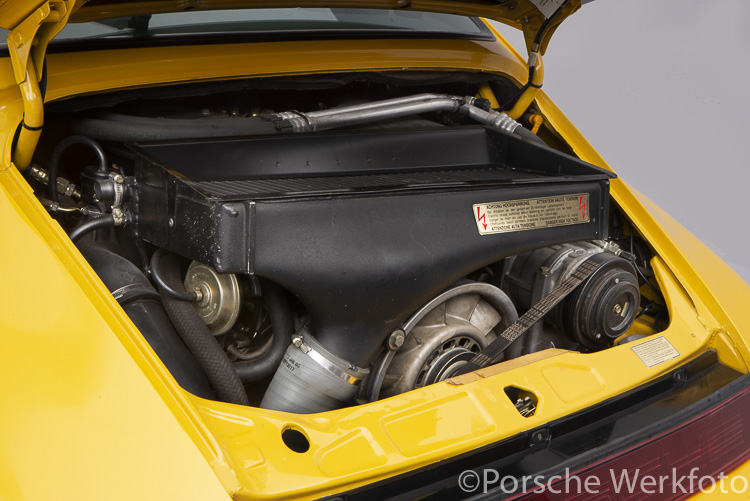
At the Geneva Motor Show in March 1992, the 3.3-litre 964 Turbo S was unveiled sporting air inlet vents in the rear fenders ahead of the wheels, a feature that would become a hallmark of all future 911 Turbos. Later that year, at the Paris Motor Show in the autumn, Porsche introduced its final iteration of the 964 Turbo, now featuring a 3.6-litre engine. Although the Turbo 3.6 entered production in October 1992, in reality, this model would be made for just one year, as the 964 was to be replaced by the all-new 993 series at the following year’s Frankfurt Motor Show. This almost guaranteed that the Turbo 3.6 would become a highly sought after model in time, as only 1437 units would be produced.
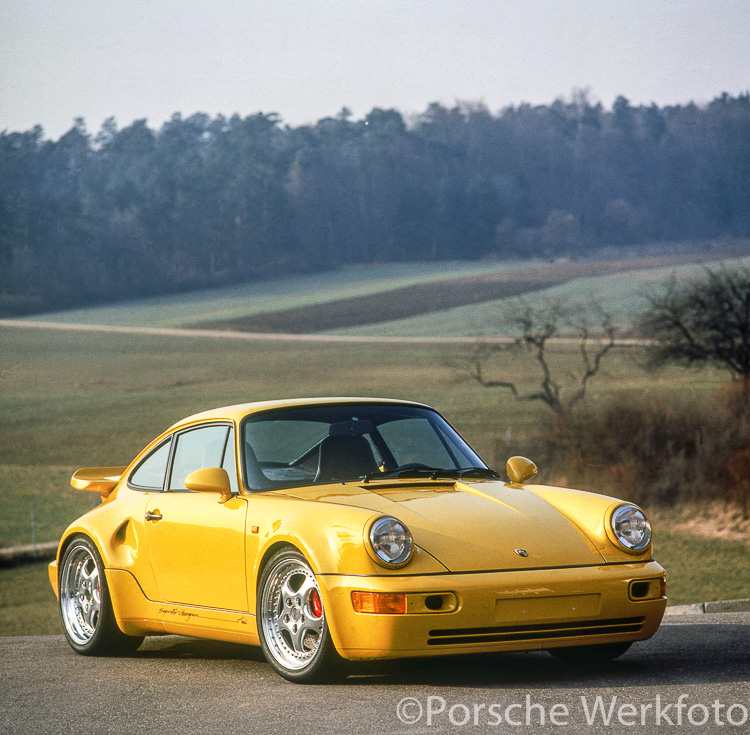
It is true that racing improves the breed, as lessons learned in the fiercely competitive Carrera Cup series proved the reliability of the new 3.6-litre engine. An additional three millimetres on the bore and two millimetres on the stroke, resulted in an increase in capacity of 300 cc. Combined with the turbo optimised cylinders, pistons and crank train, and an increase in the compression ratio from 7.0 to 7.5:1, this helped to boost power to 360 bhp. Torque was increased significantly to 520 Nm at 4200 rpm, up from 450 Nm at 4500 rpm in the earlier car, but importantly this range was available from as low as 2400 rpm right up to 5500 rpm. The turbocharger with primary and bypass catalytic converter and intercooler system was taken over, unchanged, from the 3.3-litre. In a move to reduce internal and external noise levels, the engine and gearbox were mounted on hydro-mounts, which combined the acoustic isolation function of a conventional rubber mount with balanced damping performance. These mounts ensured effective vibration isolation of the drive unit from the chassis.

Previously the reserve of the limited edition Turbo S, the three-piece Speedline aluminium 18-inch wheels made a fitting addition, clad with much wider 225/40 and 265/35 ZR 18 rubber. Visible through the wheels were the same red four-pot brake calipers and ventilated/drilled discs back and front, as used on the Turbo S.
Given the additional power output and increase in top speed, improvements to the suspension were required. The chassis of the Turbo 3.6 is 20 mm lower than the earlier 3.3 model, and combined with wider rubber, this certainly helped with the car’s roadholding. But the Turbo 3.6 was also given a stiffer suspension than its older 3.3-litre sibling. The spring rate was increased by twelve percent along with a strongly digressive (resistance rate increases as shaft speeds increase) shock absorber rating. These changes reduced the tendency to lift under acceleration, pitching under braking or rolling in aggressive cornering.
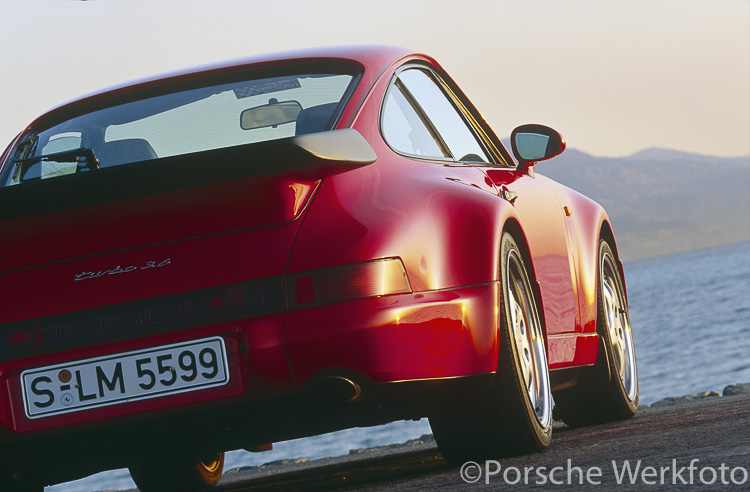
The body of the Turbo 3.6, available only in coupé form, was noticeably wider than the standard 964 by 25 mm, in order to accommodate the bigger tyres and increased track. The wider fenders and large rear spoiler gave the car a meaningful and powerful presence, while a smooth underbody ensured a more efficient aero shape, and accordingly, the coefficient of drag of 0.35, was down slightly on its predecessor.

On-board comfort included: air-conditioning, computer with turbo boost indicator, electric seat adjustment, leather upholstery, headlamp washer, metallic paint, alarm, airbag for driver and passenger, and either a radio/cassette player or radio/CD player. The Porsche press kit called it, “what a sports car should be,” which just indicates how the market was changing because 964 Turbo 3.6 could be praised for not only its high level of comfort, but also its impressive performance.

964 Turbo production
| Year | Engine | Body | Detail | Production |
| 1991 | 3.3 | Coupé | 2840 | |
| 1992 | 3.3 | Coupé | 1023 | |
| 1993 | 3.3 | Cabriolet | 8* | |
| 3.3 | Coupé | Turbo S | 86 | |
| 3.6 | Coupé | 590 | ||
| 1994 | 3.6 | Coupé | 847 | |
| 3.6 | Coupé | Slantnose | 76 |
Source: Porsche Archive
*Only eight of the ultra-rare 964 Turbo Cabriolet models exist, these being built by the Porsche Exclusive department and thus not included in the production count
The special thing about the Turbo 3.6 was, as Schmitz explains, “The engine capacity increased to 3600 cc, the wheels were changed from 17 inch to 18 inch split rims and the brake size was increased. But that was how it should have been from the beginning because the 964 Turbo model, the early 3.3-litre, was a bit disappointing with its high fuel consumption. It was heavy and at the end of the day slower than the last version of the G-model 930 Turbo.”

A walk around the car gave the opportunity to examine the various exterior features, and it became quickly evident that the Turbo 3.6 was made to perform. Visually, it just oozes charm and meaning, while the lowered suspension and ultra-wide stance, the muscular wheelarches, large rear whale tail spoiler, and extra wide rubber on those iconic 18-inch Speedline wheels, just give the car real presence. The window surrounds and door handles are finished in matt black, and Cup-design exterior mirrors combined to give the Turbo 3.6 an endearing, sporty look.

911 Turbo 3.6 on the road
Although this car has covered around 62,000 km, it is totally original in all aspects apart from the steering wheel, which is a half carbon wheel taken from a 993 Turbo S. The electrically adjustable seats are comfortable and provide ample lateral support, while the integral headrests are typical for the 911. The car fires up instantly and while the simple interior and dashboard shouts ‘1993’ at you, the engine is as eager to stretch its legs today as it was when new.
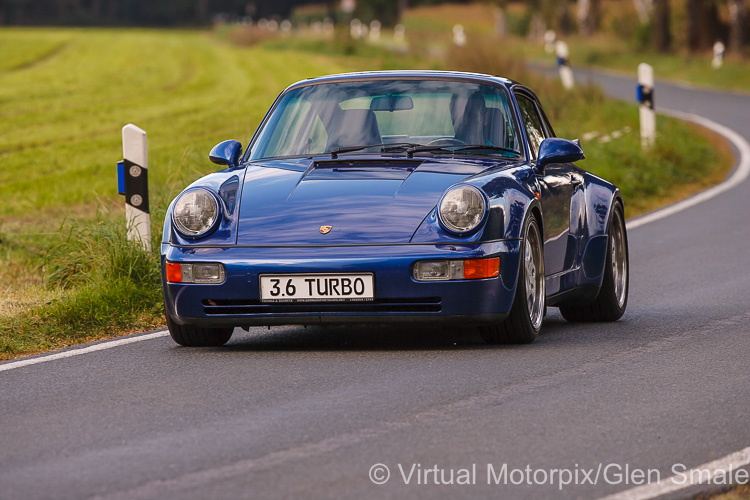
Even today, the Turbo 3.6 shows no signs of ageing, as it soon gets into its stride delivering an intoxicating burble from behind the rear seats. Heading for the open road gave us the opportunity to stir those 360 horses, and as Thomas floored the loud pedal, the turbo lag was just discernible before the power flooded in. The burble quickly becomes more intense as the revs rise, but there is no sense of straining or effort, the car just accelerates smoothly, purposefully, and ever so quickly. Theoretically of course there has to be a turbo lag, but as Schmitz explains, “There is a turbo lag, which is a characteristic of the single turbo cars, but whoever tells you there is no turbo lag, is a liar.” Learning to drive this car smoothly is not a difficult task, as the turbo lag is minimal, and as you change up through the gears you learn to adapt to your position on the road, anticipating the throttle response with each gear change.
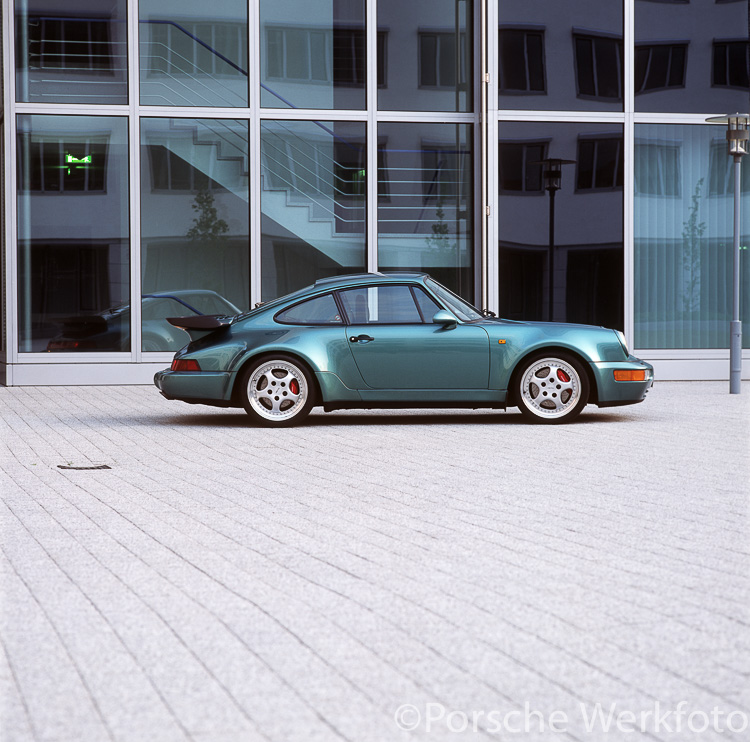
The overwhelming impression given by this car is that of being thoroughly civilised, predictable and smooth in its behaviour, a world away from the earlier turbo models. The test drive was over all too quickly, and as we parked up, I was tempted to stay seated for a little longer, just to savour some more of that ‘90s magic. This car had aroused in me the desire for the open road, a mountainous twisty route interspersed with fast, short straights to once again feel that push in your back as the turbo spins up, delivering that unmistakable turbo rush. But as they say, all good things have to come to an end, and my dream was rudely interrupted by a comment from outside, “That was great wasn’t it,” Thomas offered as I was jolted back to reality.
In closing
In one sense, the 964 Turbo 3.6 represented the end of an era, as this model was the last of the single-turbo 911s and the incoming 993 model was to be fitted with twin turbos. With its much reduced although just perceptible turbo lag, the 964 Turbo 3.6 is a vivid reminder of an earlier sports car era, as memories rushed back of the very first 930 Turbo I saw as a teenager back in 1975. That day, the 930 took off from a stop street leaving a trail of twin black strips of rubber on the road…and I was hooked!
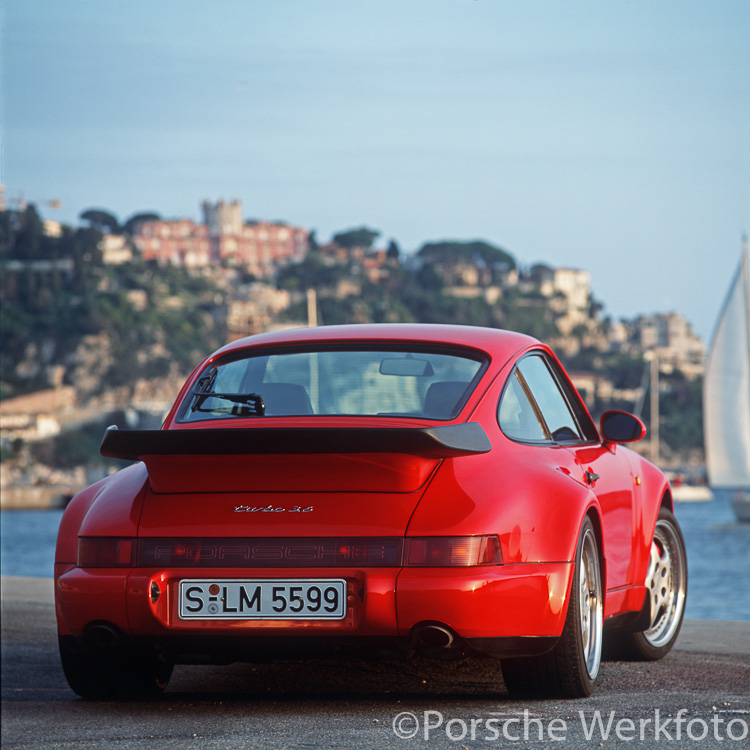
Porsche trialled and perfected turbo technology on the race tracks of the world, and they brought that know-how to their road cars for all to enjoy. Forty-five years after its launch, the 911 Turbo model of today is still a favourite amongst Porsche enthusiasts.
Technical specifications
| Model | Porsche 911 (964) Turbo 3.6 |
| Year | 1993 |
| Engine & transmission | |
| Capacity | 3600 cc (M 64/50) |
| Compression ratio | 7.5:1 |
| Maximum power | 360 bhp @ 5500 rpm |
| Maximum torque | 520 Nm @ 4200 rpm |
| Transmission | 5-speed manual (G 50/52) |
| Suspension | |
| Front | Independent suspension by transverse links, with single coil spring, stabiliser bar, twin-tube gas-pressure shocks |
| Rear | Independent suspension by semi-trailing arms, with single coil spring, stabiliser bar, twin-tube gas-pressure shocks |
| Wheels & tyres | |
| Front | 8J x 18 with 225/40 ZR18 |
| Rear | 10J x 18 with 265/35 ZR18 |
| Dimensions | |
| Wheelbase | 2272 mm |
| Track front/rear | 1422/1488 mm |
| L x W x H | 4275 x 1775 x 1290 mm |
| Weight | 1470 kg |
| Performance | |
| 0-62mph | 4.8 secs |
| Top speed | 174 mph |
Thanks to Thomas Schmitz of German Sports Cars for his help with this feature.
Bibliography
| Excellence was Expected | Karl Ludvigsen, Bentley Publishers, 2019 |
| The Porsche Book | Jürgen Barth & Gustav Büsing, David Bull Publishing, 2009 |
| Porsche & RUF Sportscars | Marc Bongers, Motorbuch Verlag, 2005 |
Written by: Glen Smale
Images by: Virtual Motorpix/Glen Smale and Porsche-Werkfoto




